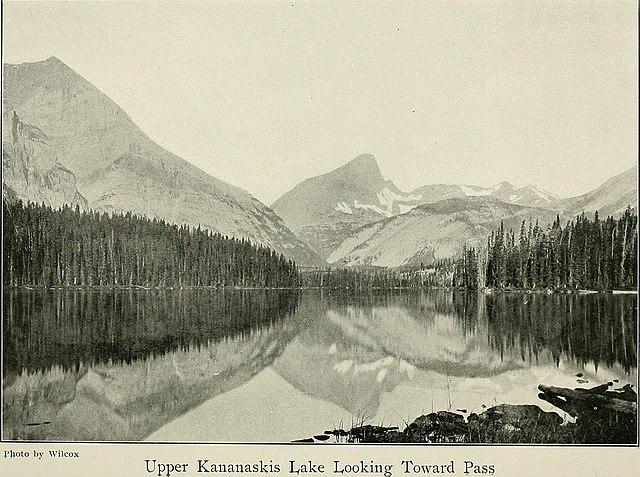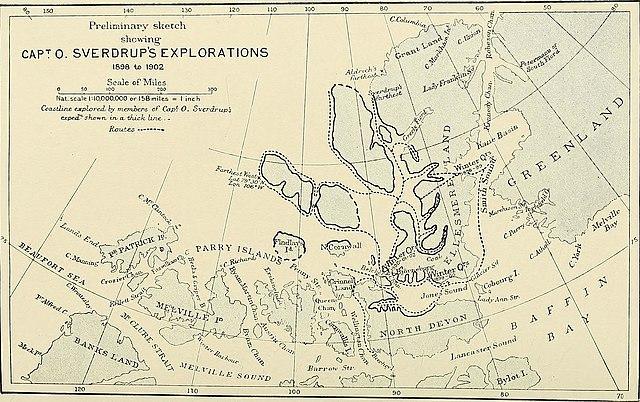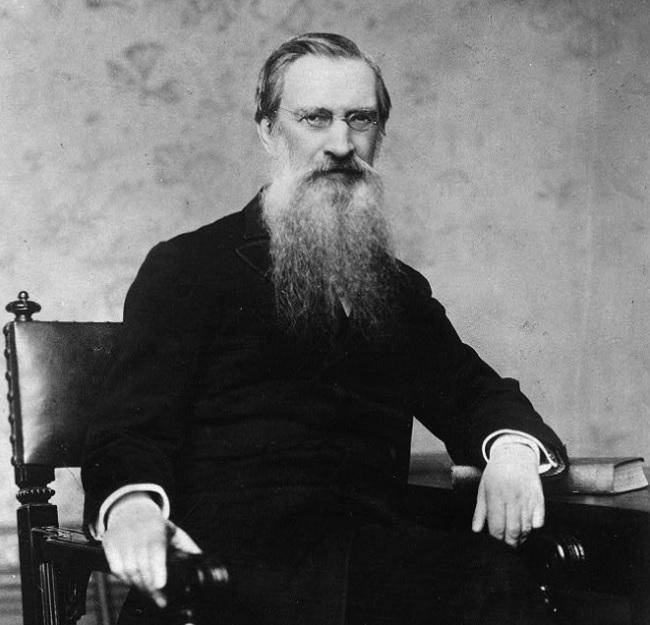Introduction
Gardiner Greene Hubbard, a prominent lawyer, financier, and philanthropist, played an influential role in the development of the National Geographic Society. Born in Boston, Massachusetts, in 1822, Hubbard had an insatiable curiosity and was a staunch supporter of science, technology, and education. His keen interest in geography, telegraphy, and his strong connections with influential figures like Alexander Graham Bell helped him establish the National Geographic Society as a world-renowned organization. This article will explore Hubbard’s life, his contributions to the National Geographic Society, and how he shaped its growth into an internationally recognized institution.
A Man of Diverse Interests
Hubbard’s interests were as diverse as his accomplishments. He was a skilled lawyer, a successful entrepreneur, and a visionary leader. Hubbard was a key figure in the development of the telegraph, having played a crucial role in the formation of the Bell Telephone Company, later known as AT&T. His passion for geography led him to become one of the founding members of the National Geographic Society, which aimed to increase and diffuse geographic knowledge. Beyond his professional achievements, Hubbard was also an advocate for educational reform and actively supported initiatives aimed at improving the quality of education in the United States. He believed that a well-educated population was essential for the progress and prosperity of the nation. This drive for knowledge and improvement extended to his personal life, as he was an avid reader, a dedicated philanthropist, and an enthusiastic supporter of the arts and sciences. In every aspect of his life, Gardiner Greene Hubbard demonstrated an unwavering commitment to progress, innovation, and the pursuit of knowledge.
The Birth of the National Geographic Society
In 1888, Hubbard and a group of like-minded individuals, including Alexander Graham Bell, John Wesley Powell, and Henry Gannett, established the National Geographic Society. The organization’s mission was to promote the study of geography and enhance public understanding of the world. They aimed to achieve this through the publication of a magazine filled with valuable geographic knowledge, captivating images, and engaging content.
From the beginning, Hubbard was the driving force behind the National Geographic Society. He served as its first president until he died in 1897. Under his leadership, the Society attracted many accomplished explorers, scientists, and educators, creating a strong foundation for the organization to grow and prosper.
Hubbard’s vision for the National Geographic Society extended beyond the pages of the magazine. He understood the importance of fostering a sense of curiosity and wonder about the world, and he worked tirelessly to make geography accessible and engaging to a wider audience. Under his guidance, the Society organized public lectures, sponsored expeditions, and supported scientific research. These initiatives helped to create a sense of excitement and adventure around the study of geography, attracting new members and inspiring generations of explorers and scientists.
The Visionary Behind the Magazine
One of Hubbard’s most significant contributions to the National Geographic Society was his idea to create a magazine that would serve as a valuable resource for people interested in geography and exploration. This magazine, which would later become the renowned National Geographic, was initially a technical journal. Although it was highly informative, it lacked widespread appeal and struggled to attract readers.
Realizing the need for change, Hubbard and Bell envisioned a more accessible and engaging publication that would cater to a broader audience. They aimed to transform the magazine into a platform that would bind the members of the Society, fostering a sense of wonder and appreciation for science, foreign cultures, and the natural world.
To achieve this vision, they needed a dedicated, full-time editor who would bring life to their ideas. Bell eventually found the perfect candidate in Gilbert H. Grosvenor, who became the first editor of the National Geographic magazine. Under Grosvenor’s leadership, the magazine began to feature well-written, solidly reported articles and stunning illustrations, including maps and photographs.
One notable anecdote from the early days of the magazine demonstrates Hubbard’s commitment to this new direction. As the magazine’s first president, Hubbard had a clear vision for the publication, and he was determined to see it through. He announced to the Society’s board of managers that he would personally fund the salary of the new full-time editor, a testament to his dedication to the cause. This decision proved to be a turning point for the magazine, as it began to gain traction and grow its readership.
Hubbard’s leadership in transforming the magazine was not only a matter of selecting the right editor but also of guiding the editorial direction. He encouraged Grosvenor to focus on creating content that would be both educational and entertaining, with an emphasis on high-quality writing, reporting, and visuals. This shift in focus allowed the magazine to capture the public’s imagination, drawing in readers who were eager to learn about the world around them.
As a result, the National Geographic magazine began to feature stories that captured the essence of Hubbard’s vision, shedding light on fascinating discoveries and foreign cultures. For example, one early issue featured an article about the excavation of an ancient city, bringing to life the history and culture of a long-lost civilization. This combination of engaging storytelling and rich visual content helped the magazine become a beloved institution, synonymous with the spirit of exploration and discovery. Thanks to Hubbard’s foresight and dedication, the National Geographic Society and its magazine would go on to inspire generations of readers, explorers, and scientists.

This is an example of the vivid imagery that made the magazine so popular. This image is from page 262 of “The National Geographic Magazine” (1888). There was no television in this time period. This would have been a fantastic image for people to see then.

The image of this map published in 1902 is from Captain Sverdrupin’s expedition in the Arctic (1898-1902), which took approximately four years. The map shows the routes he followed during his exploration. This is an example of the vivid imagery and storytelling that a reader of the magazine was exposed to, which was promoted by Hubbard. A summarization of Captain Sverdrupin’s journey was described in the magazine: “They have discovered the westernside of Ellesmere Island and its intricate system of fiords, as well as three large islands west of Ellesmere island; they have explored the northern coast of North Devon; they have conntected Belchers work with the ocasts of Jones Sound; they have reached a point within 60 miles of Aldriches furthest; and they have discovered the land nort of the Parry Islands, the existence of which was conjectured, as far west as the longitude of the eastern coast of Melville Island. This includes the discovery of the northern sides of North Cornwall and Findlay Island.”
Hubbard’s Legacy
Gardiner Greene Hubbard’s vision for the National Geographic Society and its magazine laid the groundwork for the organization’s future success. His passion for geography, commitment to the dissemination of knowledge, and determination to create a publication that could captivate audiences transformed the National Geographic Society into a global force.
Even after his death, Hubbard’s influence continued to shape the organization’s growth. His daughter Mabel married Alexander Graham Bell, who succeeded Hubbard as the Society’s president. The couple played a crucial role in furthering Hubbard’s vision, maintaining the Society’s commitment to education and exploration.
The National Geographic Society today is a testament to Gardiner Greene Hubbard’s foresight and dedication. His innovative ideas and unwavering commitment to the promotion of geographic knowledge laid the foundation for an organization that has become synonymous with exploration, education, and inspiring curiosity about the world.
In the years following Hubbard’s death, the National Geographic Society continued to flourish, thanks in large part to the groundwork he had laid. His passion for exploration, innovation, and education set the tone for the organization and inspired its members to push the boundaries of human knowledge. Today, the National Geographic Society remains a vital and influential institution, continuing to inspire wonder and curiosity about our world. Hubbard’s legacy lives on through the ongoing work of the Society, as it remains committed to his vision of a more geographically informed and connected global community.
Conclusion
Gardiner Greene Hubbard’s impact on the National Geographic Society cannot be overstated. His passion for geography, exploration, and education helped establish the organization as a leading institution in the dissemination of geographic knowledge. By transforming the National Geographic magazine into an engaging and visually stunning publication, he revolutionized the way people consumed information about the world.
Hubbard’s legacy lives on through the National Geographic Society’s continued commitment to promoting understanding and appreciation of our planet. The organization’s dedication to research, exploration, and education is a testament to Hubbard’s vision and his unwavering belief in the power of knowledge.
Through the National Geographic Society, Gardiner Greene Hubbard helped inspire generations of readers, explorers, and scientists to learn about the world around them and to appreciate the wonders of our planet. His visionary leadership and pioneering spirit laid the groundwork for a thriving organization that continues to captivate, educate, and inspire people across the globe.
Today, the National Geographic Society has expanded its reach through various platforms, including television, online media, and educational initiatives, all of which can trace their roots back to Hubbard’s initial vision. As a result, his contributions to the world of geography, exploration, and education will forever be remembered as the driving force behind one of the most influential organizations in history.
As we continue to explore and uncover the mysteries of our planet, we can look back on the life and work of Gardiner Greene Hubbard as an enduring source of inspiration. His unwavering dedication to the pursuit of knowledge and understanding laid the foundation for a legacy that will endure for generations to come. Through his pioneering efforts, Hubbard truly transformed the way we see and engage with the world, leaving an indelible mark on the fields of geography, exploration, and education.
References:
- Poole, Robert M. Explorers House: National Geographic and the World It Made. Penguin Press, 2004.
- Map image reference
- Mountain/landscape image reference










